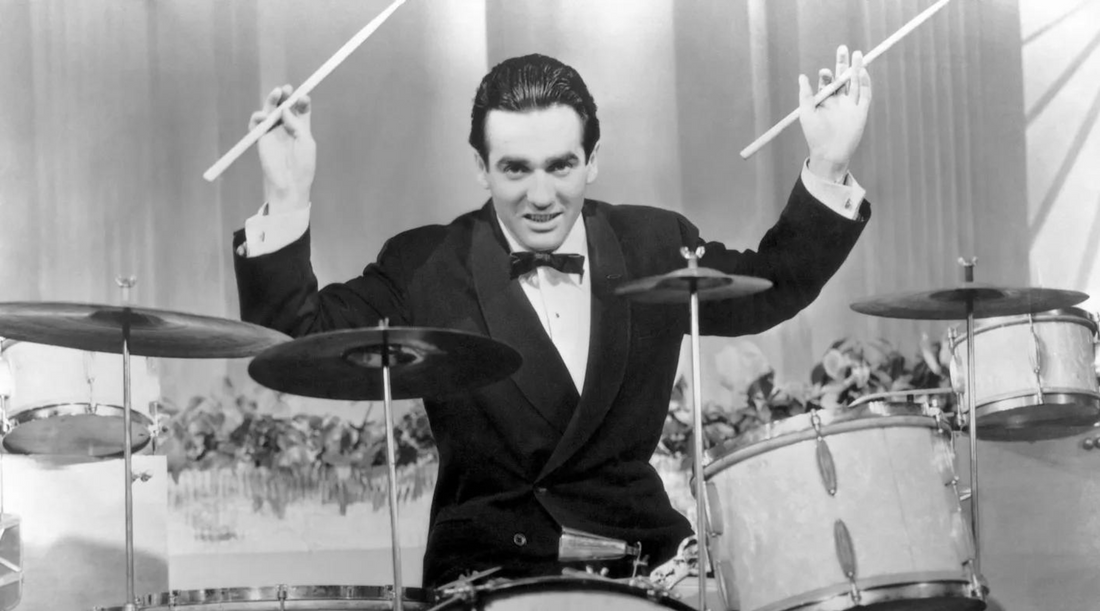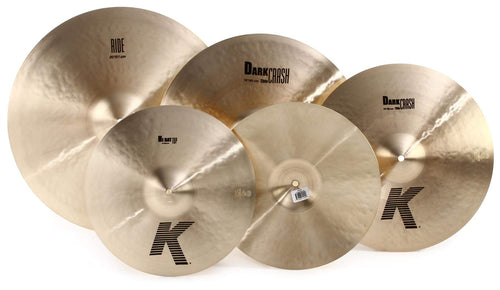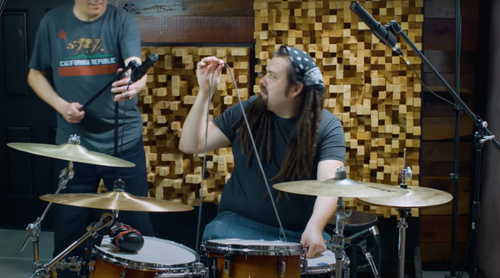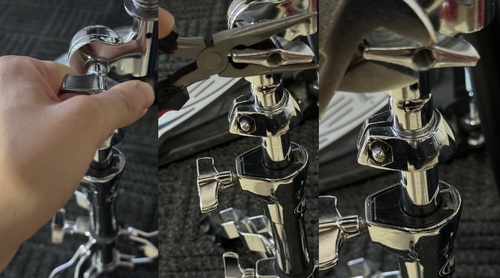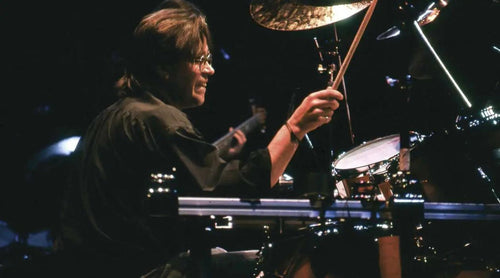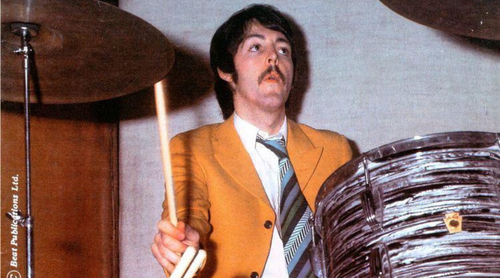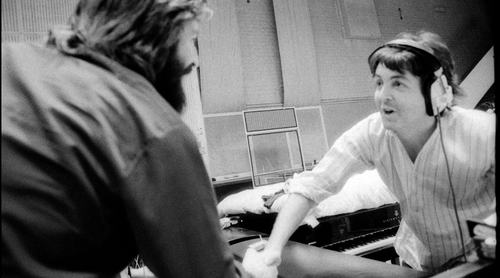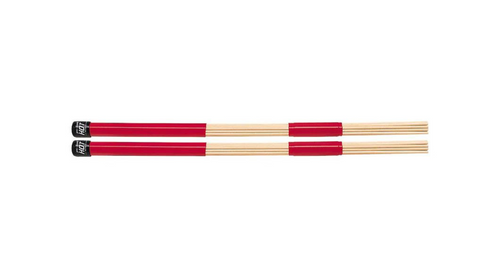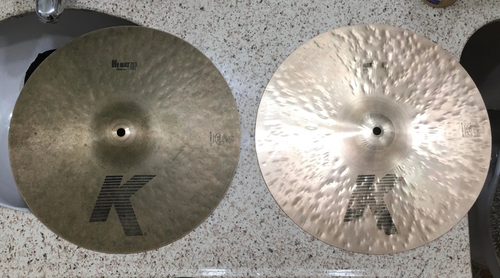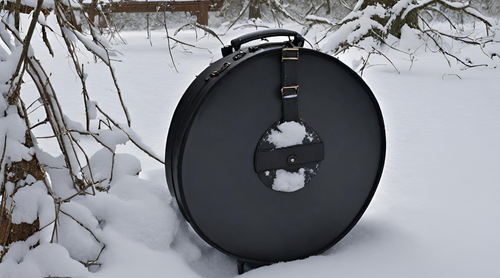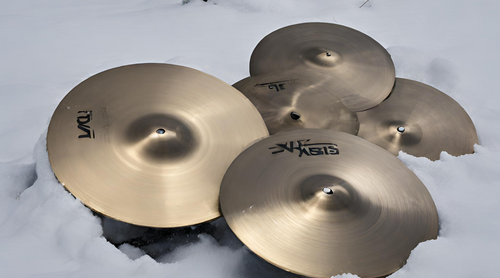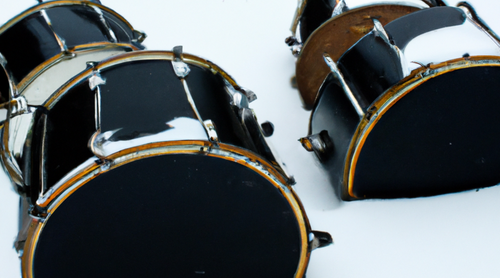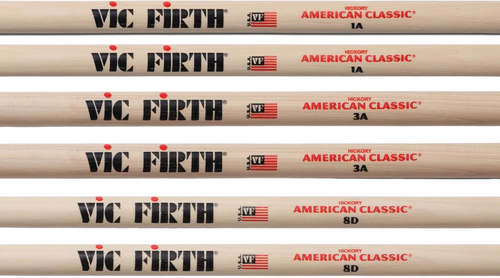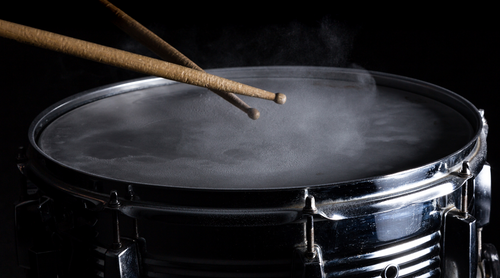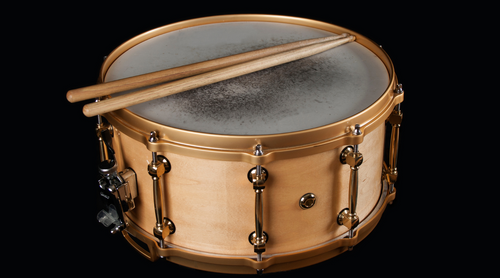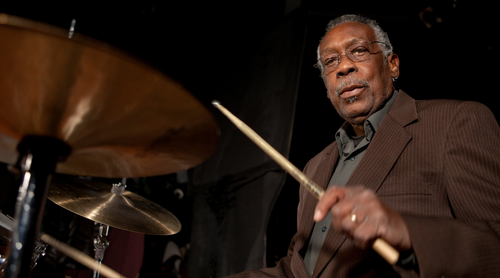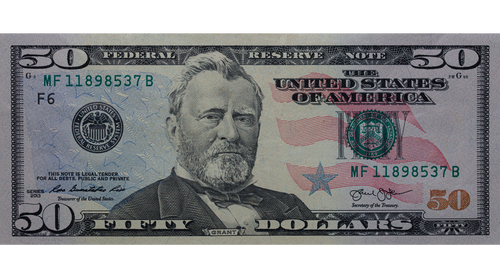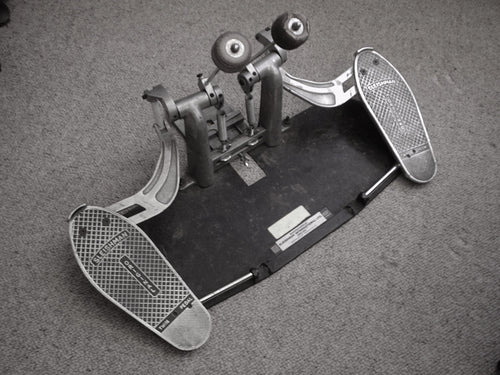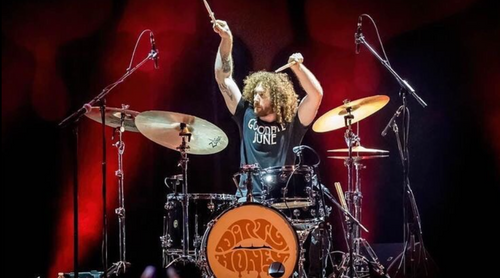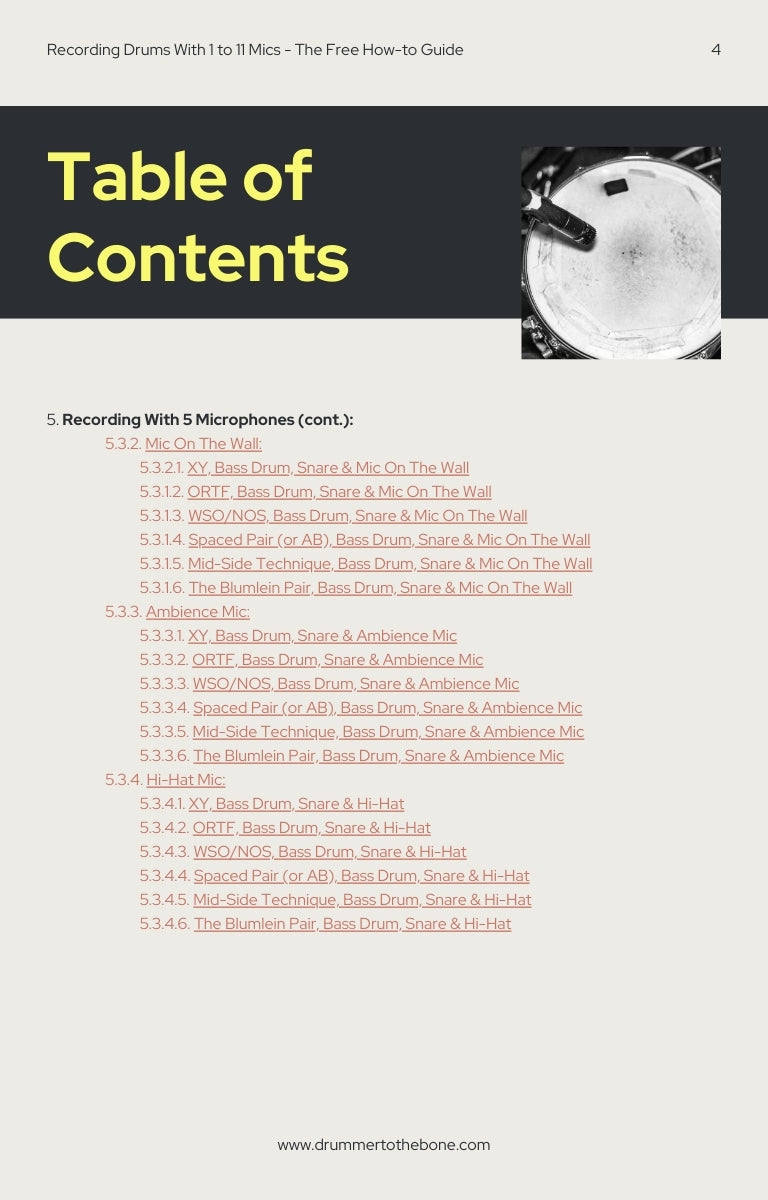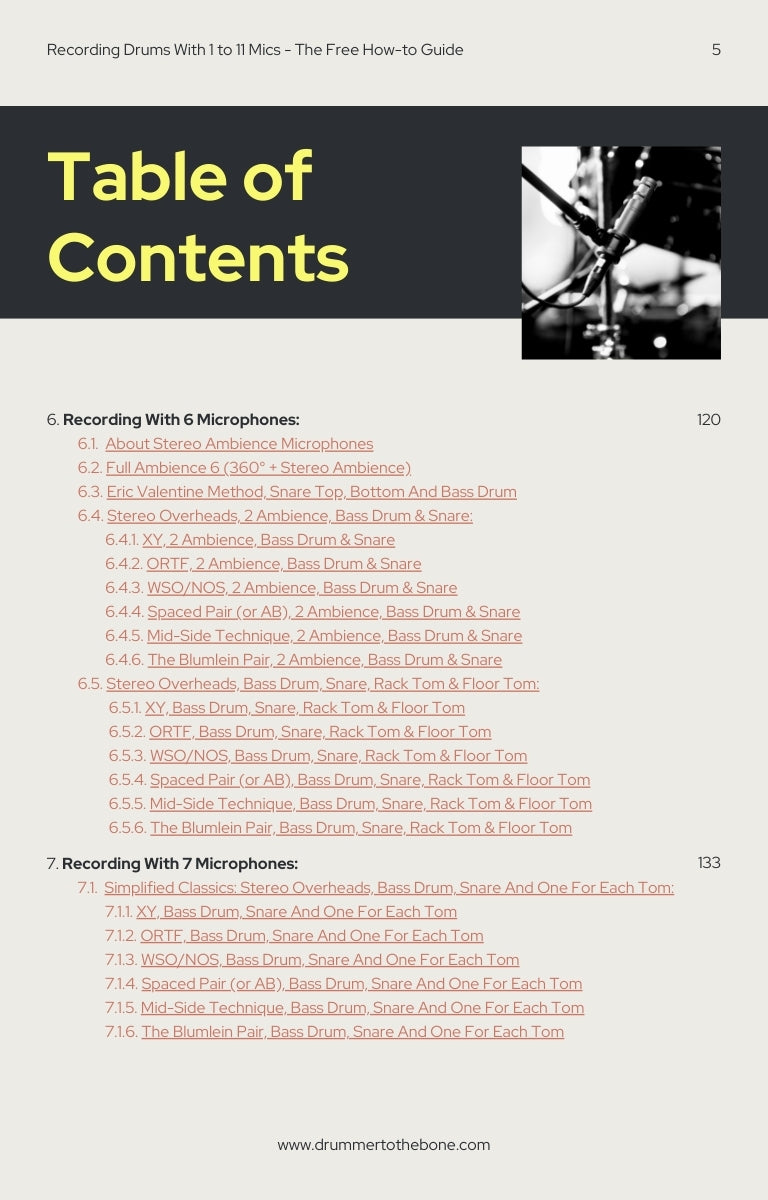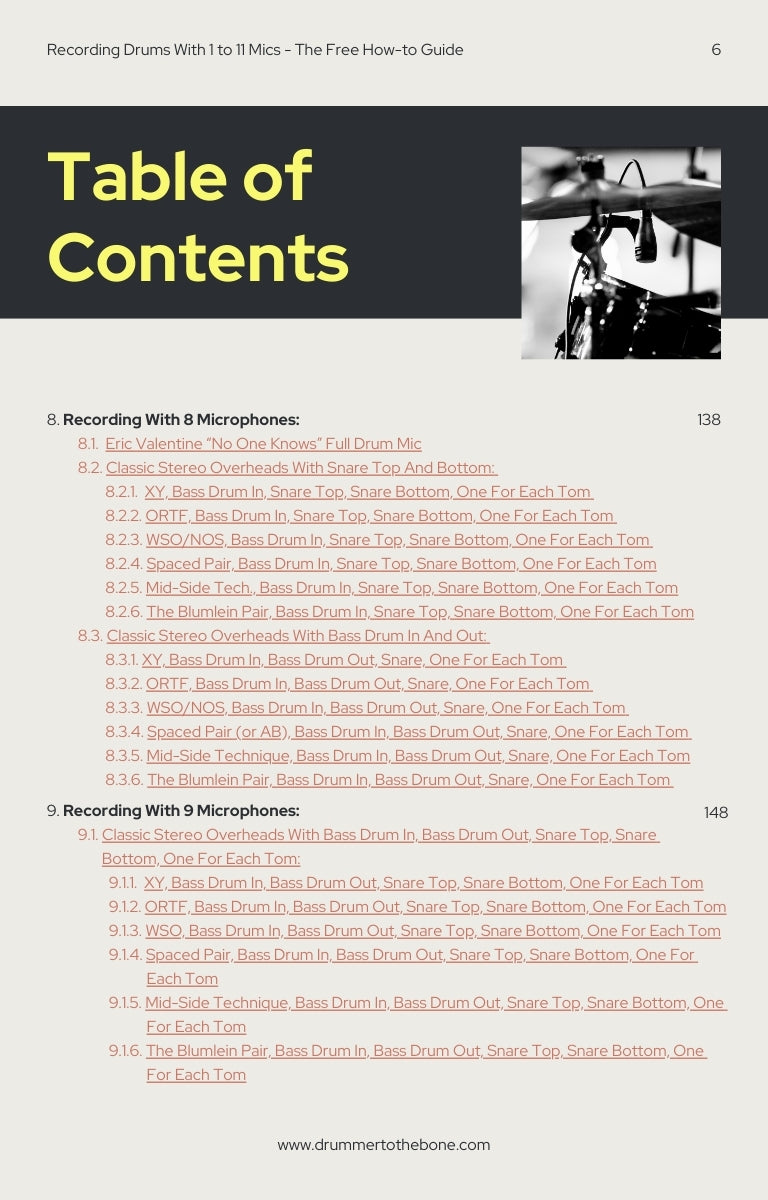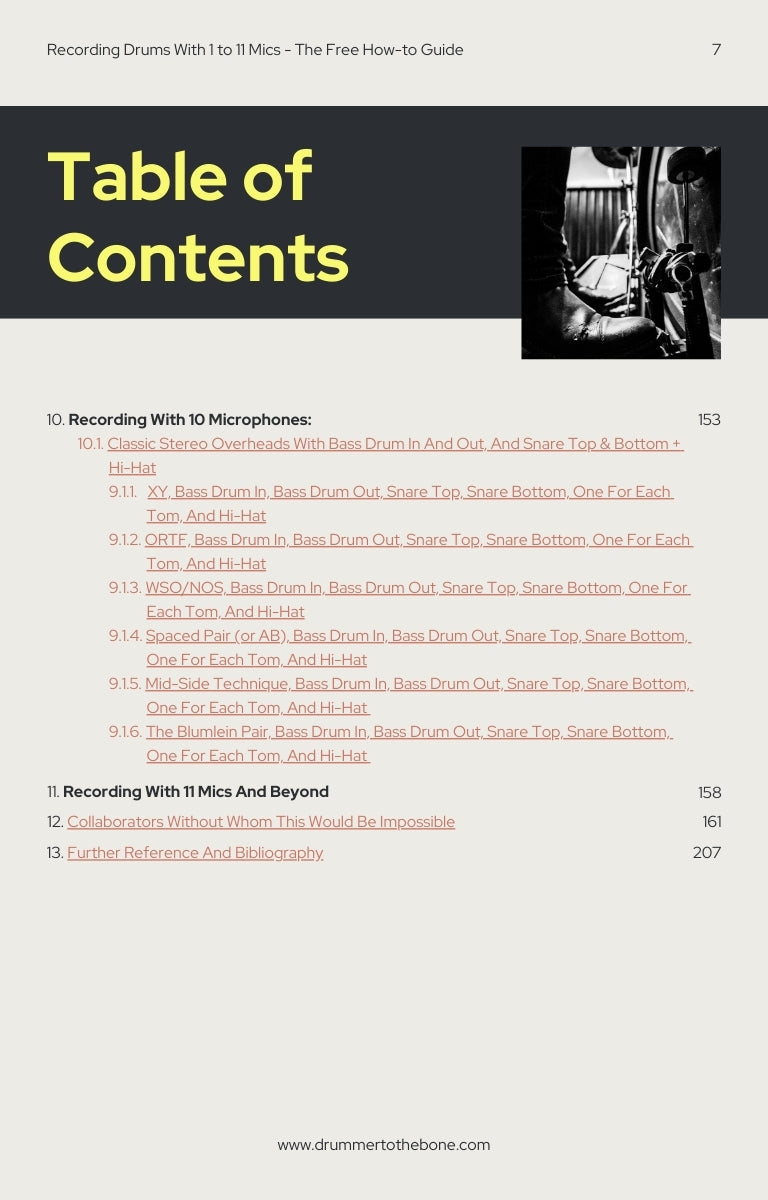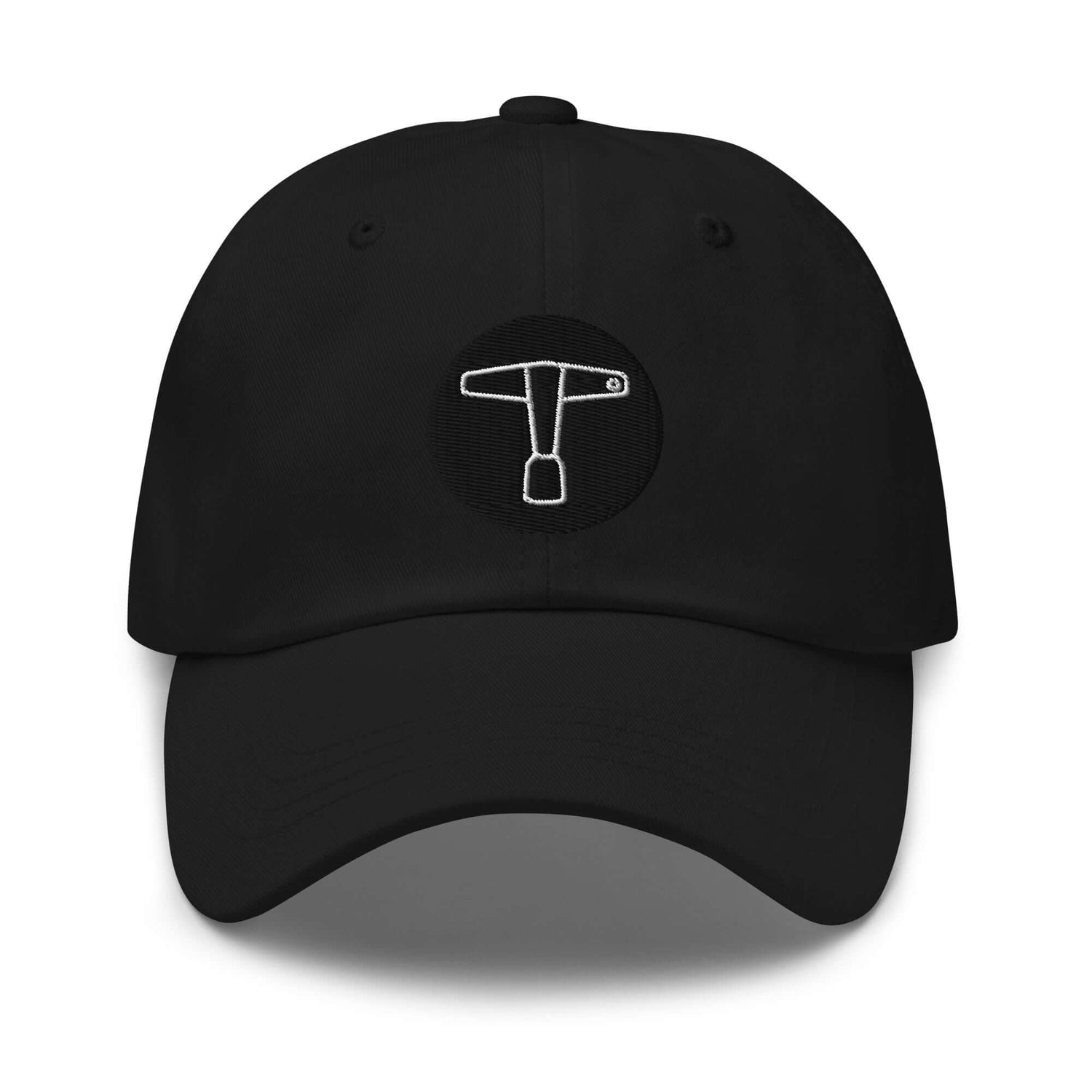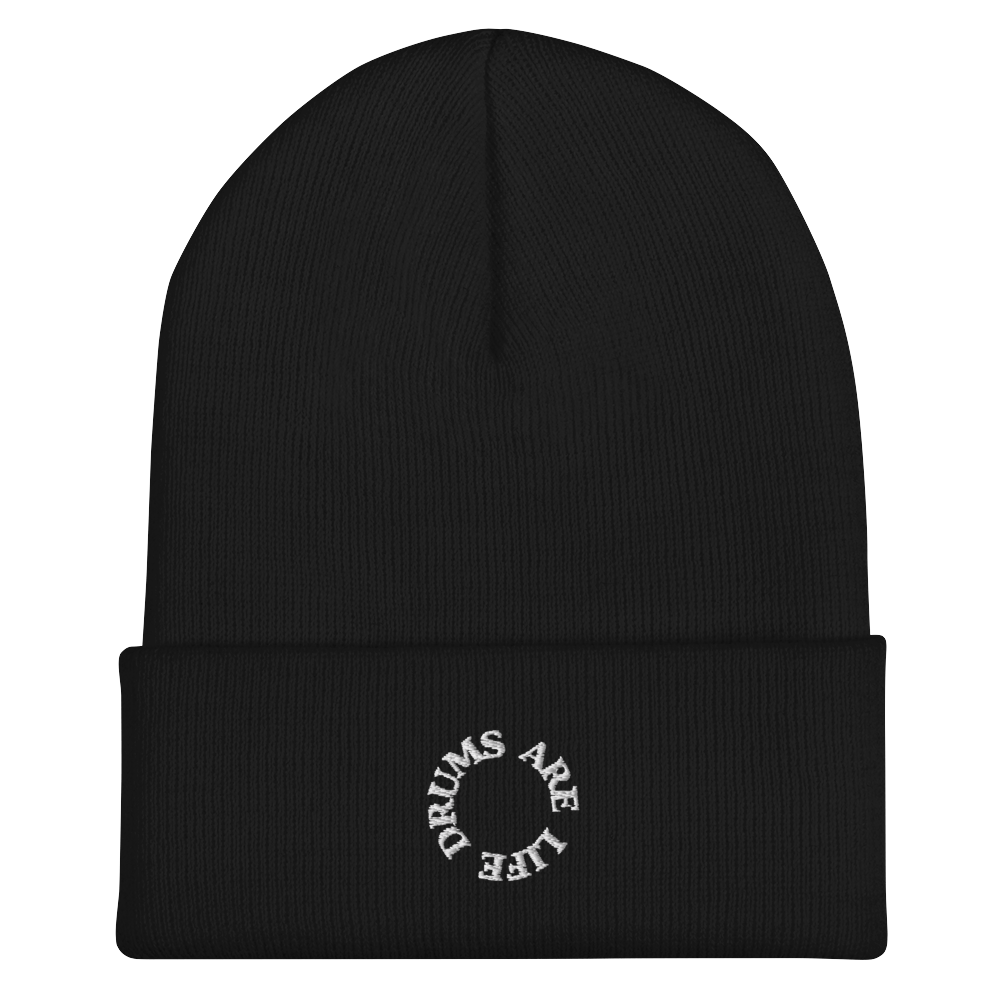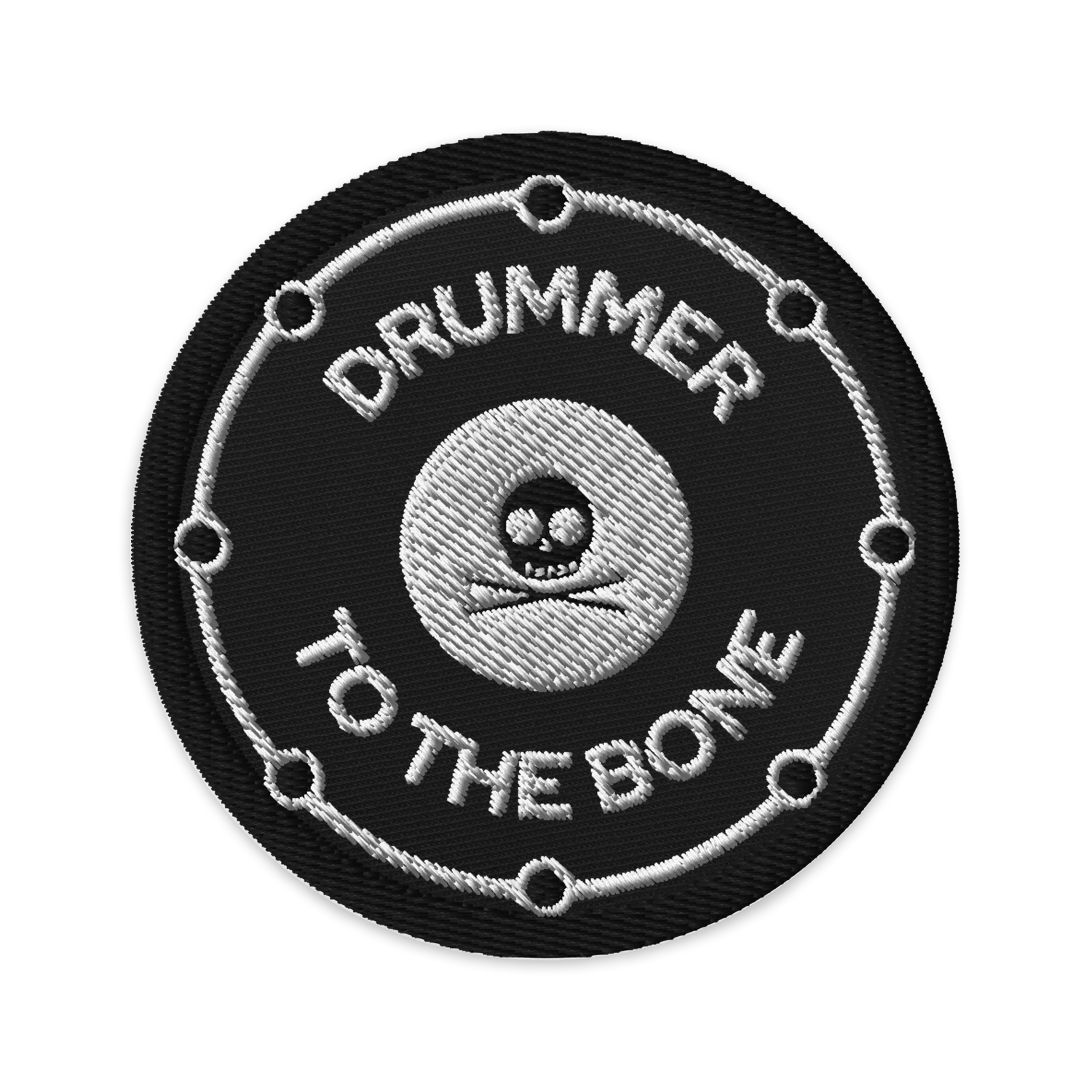Up to the 1950's drummer played drum heads made of animal hide. Until Remo Belli came in the scene and everything changed forever.

The Old Material
When we see those old photos of Gene Krupa, Buddy Rich and all the greats back in the 1940's or earlier, sometimes we fail to realize the fact that those drum heads were made of calfskin.

Drumheads used to be made of calfskin
Calfskin - like many other animal hides - is very resistant, and it was commonly used because it produced a warm and rich sound.
Problems with calfskin
Drum heads have been made of animal hide since the beginning of time (I sometimes forget that we play, basically, the oldest instrument in history). This came with a number of problems inherent to an organic material, namely they are very sensitive to changes in humidity and temperature, which could affect the tuning and sound quality. If you were playing in a very hot and humid club, then you might had to tune your drums after every song during a set! And, when stored, you'd have to pitch them down so they don't overstretch.

Vintage Ludwig calfskin drum head. These heads were very sensitive to changes in humidity and temperature
Also, around the 1950's another problem popped up...
Enter Remo Belli
Remo Belli, a Mishawaka, Indiana-born drummer, opened Drum City - a drum store - on Santa Monica Boulevard in 1950. Remo realized after a few years that the growth of Rock and Roll meant that there were insufficient supplies of calfskin to meet the demands.
The main supplier of calfskin heads, AMRAWCO (American Rawhide Company) could hardly keep up with demand in the late 50's, and that was bad business for Remo.

AMRAWCO drum heads, one of the leading companies of drum heads until the 1950's
Mylar is the answer

Mylar
Jim Erwin, a chemical engineer for 3M was the first to use Mylar as a drumhead. “I used to go to New York to see my jazz trumpeter brother play in the nightclubs there” says Erwin.
It was around 1952, and he was leading a band at the Cafe Metropole. Duke Ellington’s former drummer, Sonny Greer broke a drumhead that night, and later I went up to him and told him that I thought I could make a head for him that wouldn’t break. I had been working with polyester film at 3M for about eight years and thought it might work as a head material. I went back to Minnesota and made one up by serrating the edge of a piece of Mylar so it could be bent around and attached to the flesh hoop of a calfskin head. I took it back to Sonny in New York, and he used it and said that it was the best head he’d ever played on. He was really impressed with its uniformity.
Remo finds Mylar
Since he was a successful touring drummer, and part owner of Drum City, Remo was welcomed at Slingerland and the other companies. Bud Slingerland showed Remo a new plastic made by DuPont called Mylar. At first Remo didn't think much about it, but in early 1956 Remo was preparing Drum City for their annual “Percussion Fair”. He obtained a piece of Mylar and stapled it onto a 14” wood flesh hoop for display purposes and the response was phenomenal.
Later that year, Drum City’s accountant introduced Remo to a chemist he knew, Sam Muchnick. Sam was interested when the plastic drumhead subject came up, and he and Remo began working on a new design for a drumhead. They spent quite an amount of time experimenting and testing.
By early 1957 they had developed what proved to be the first successful plastic drumhead design.
The Weather King is born
This new plastic drum head solved many problems at the same time:
- The supply was not dependent of another company which had limited supply of raw material (calfs). So, they could sell as much as demand required.
- Tuning was more consistent throughout its life.
- It was way more resistant than calfskin heads, especially for the new and upcoming Rock and Roll drummers.
- It wasn't affected by weather. That was one of the first marketing slogans for Remo Drum Heads: "Weather King. Unaffected by weather".

Remo marketed their drum heads as 'Weather King. Unaffected by weather"
By 1957, Remo attended the Tri-State Music Festival in Enid, Oklahoma, where he showed the head to Bill Ludwig. Bill said that his company had been trying to create a plastic head as well. Ultimately, Ludwig became one of Remo Inc.’s first customers, with many more to follow, including Slingerland. And the rest is history.
Calfskin drum heads today
You can still get calfskin drum heads, but of course they are more difficult to find. Companies like Earthtone produce calfskin heads exclusively. You can still find vintage drum heads in websites like Olympic Drums. Also, big drum head companies like Evans make the Calftone, a synthetic drumhead that have the look, feel, and sound of real calfskin.
Have you played with calfskin drum heads? What was your experience? Share with your fellow drummers in the comments below!

